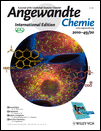In recent years, N-heterocyclic carbenes (NHCs) have emerged as an important family of catalytically useful ligands whose relevance is considered comparable to that of the cyclopentadienyl and phosphine ligands. Pyridylidenes are an interesting subclass of NHCs capable of forming normal, abnormal, and remote carbenes. They may be obtained from pyridinium salt precursors, although various alternative procedures are available, including functionalization of metallated pyridyl ligands, or C-H bond activation of N-heterocycles. Recently, pyridines and related N-heterocycles have been shown to experience metal-induced rearrangements that lead to N-heterocyclic carbenes.
In work based on the use of [Tp’Ir(R)(R’)] fragments (Tp’ = hydrotris(pyrazolyl)borate groups; R,R’ = alkyl or aryl groups), we observed isomerization of pyridine, 2-substituted pyridines, and polypyridines to NHCs. As a continuation of this work, we have studied the reactivity of pyridylidene complexes 1 toward ethene, propene, and acetylene to yield novel iridacyclic pyridylidene structures that stem from C-N bond formation.



 Español
Español